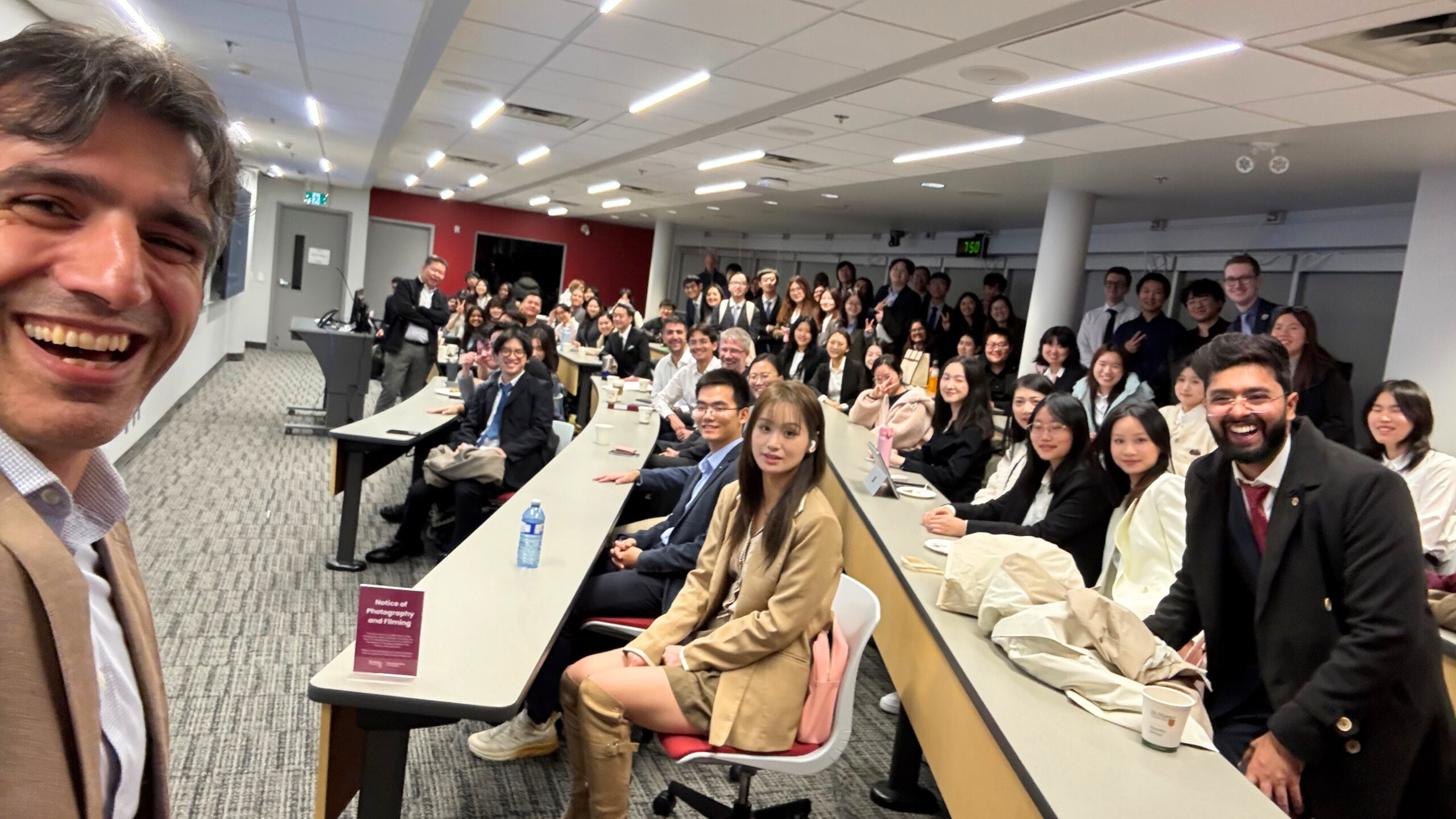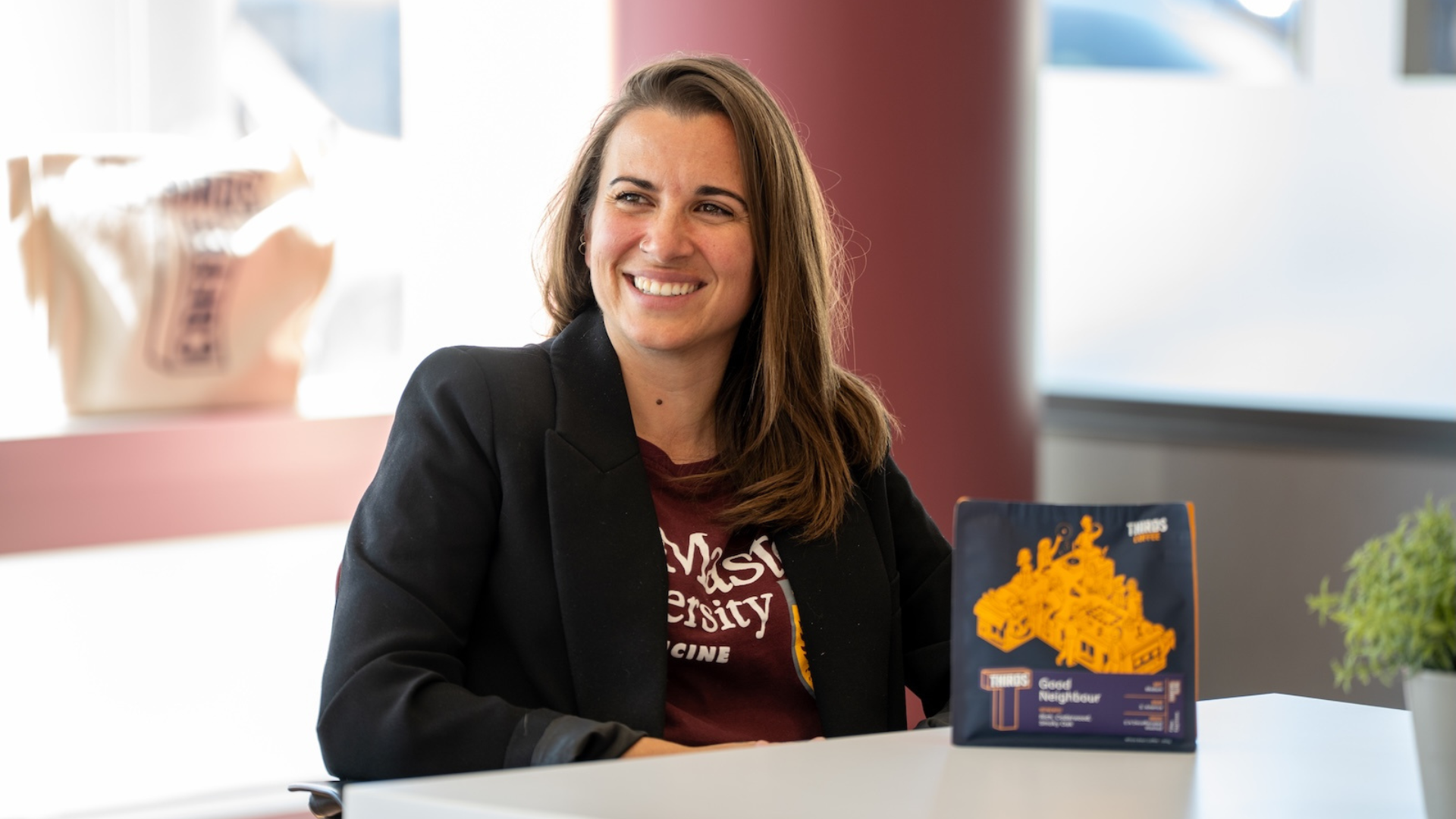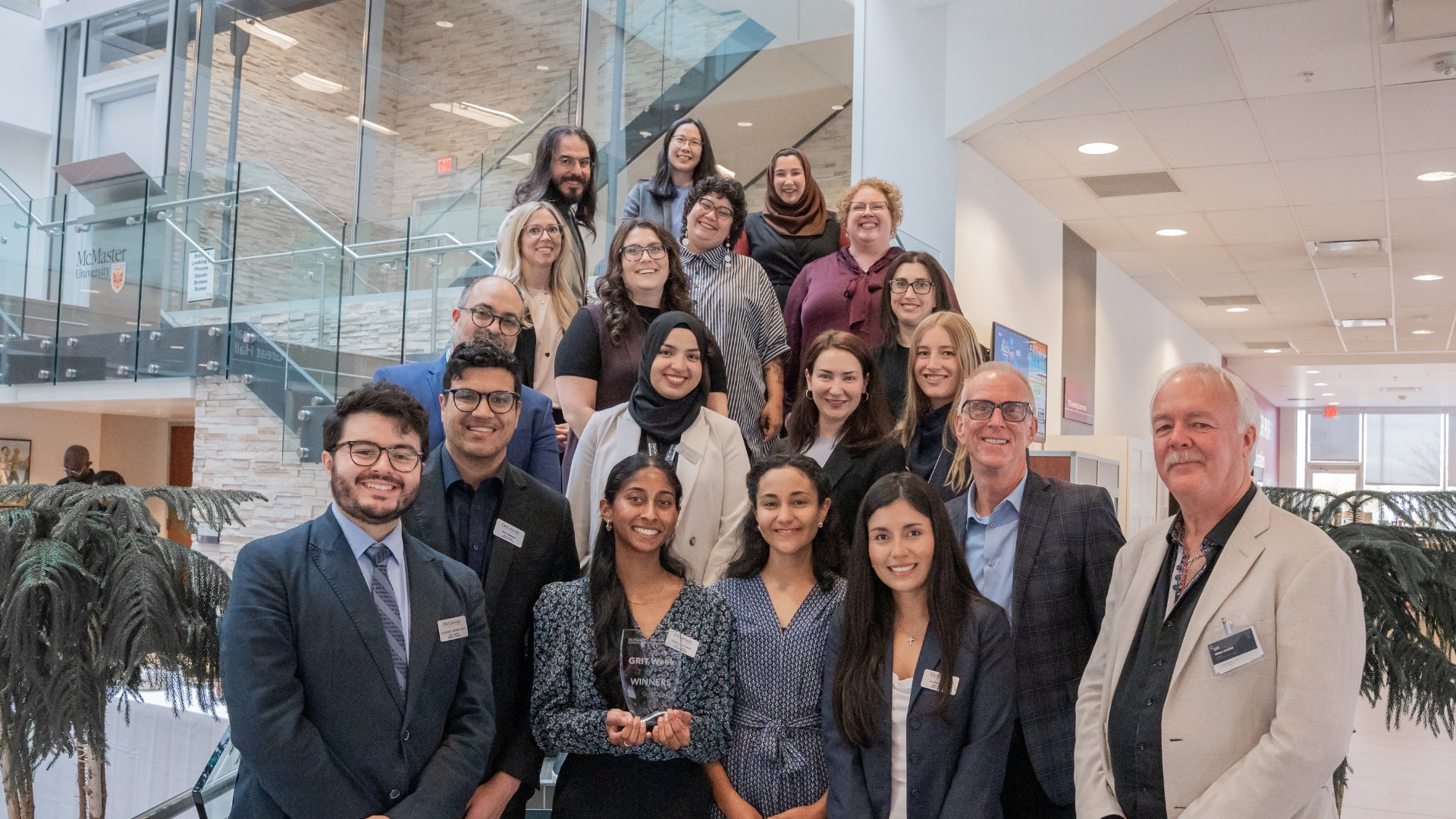FINANCE AND BUSINESS ECONOMICS STRATEGIC PLAN | TEACHING AND LEARNING
Finding the value in financial analytics
November 25, 2025 ·
Contributed by: Julienne Isaacs

Amir Akbari, associate professor of Finance and Business Economics and a judge on the panel, smiles with MFin students, faculty and equity analysts.
How do you assess the worth of a business?
Master of Finance (MFin) students learn exactly what it takes in a hands-on project that draws on every lesson they learn in their first term at DeGroote.
Working in teams of four to five, students—who have different educational backgrounds—are given seven weeks to value a publicly listed Canadian company. At the end of those seven weeks, they produce a detailed valuation report and executive summary and a 30-minute presentation with a Q&A before a panel of faculty, experienced equity analysts and senior MFin students.
In short, the project is a crash course in thinking like a financial analyst.
The valuation project is led by Yingnan Zhao, an assistant professor in Finance and Business Economics.
What makes the exercise so valuable?
Zhao says it pushes students to look beyond textbook models. Through the project, she pushes students to explore the unknown.
“They realize that in the real world, valuation isn’t about finding a ‘perfect’ number but about managing uncertainty and exercising judgment,” she says. “That mindset shift from calculation to critical thinking is something you can only develop by working with real companies and imperfect data.”
And because it’s offered within the first seven weeks of the program, students are able to approach the fall recruiting season with the confidence that comes from authentic experience.
Zhao says the students treat the assignment more like a professional exercise than a classroom assignment. “They act as equity research analysts for a large, diversified investment fund to deliver a buy, hold or sell recommendation based on a three- to five-year horizon,” says Zhao.
The project combines finance, accounting, economics, analytics and communication—everything the students learn in Term 1. Students apply multiple valuation techniques and use real market and company data from Bloomberg and Refinitiv.
But soft skills matter just as much: the project requires students to collaborate with one another and take leadership of project components and gives their communication and storytelling skills a chance to shine.
Student project highlights
Company: Magna International Inc., a Canada-based global enterprise in mobility technology and automotive
Methods: Our first step was to perform qualitative analysis of the company and its industry. We analyzed the impact of recent acquisitions of Magna, macroeconomic risks such as tariffs and production delays across North America and Europe, and how all these would impact our assumptions about the company’s forecasts.
Takeaways: This project was a true example of experiential learning—applying classroom concepts to authentic corporate finance. It deepened my understanding of how valuation isn’t just about formulas, but about judgment, research depth and storytelling.
From observing other teams, I realized how differently financial models can be constructed and how much variation exists in each group’s approach. Valuation is more about qualitative judgment than purely quantitative output.
—Prachi Kantibhai Kukadiya
Company: BCE, one of Canada’s leading telecommunication companies
Methods: We applied three valuation methods—discounted cash flow approach, the dividend discount model and comparable company analysis—and used a blended weighting of these models to estimate the target stock price. We conducted both company and industry analyses to lay a foundation for our valuation.
Takeaways: One of the most valuable lessons I learned was how to effectively use professional and academic resources.
From observing my classmates’ presentations, I came to recognize the importance of storytelling and visual clarity in communicating complex financial concepts. I particularly appreciated the groups that introduced a creative hook at the beginning, such as initiating a short Q&A with the audience or mentioning that they had called the company’s service line to verify information.
—Chun Huan Wei















